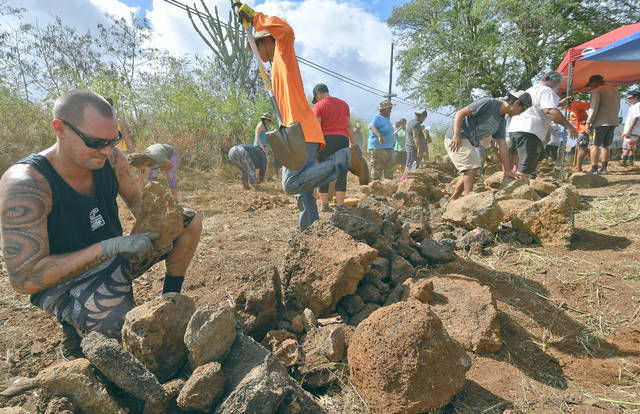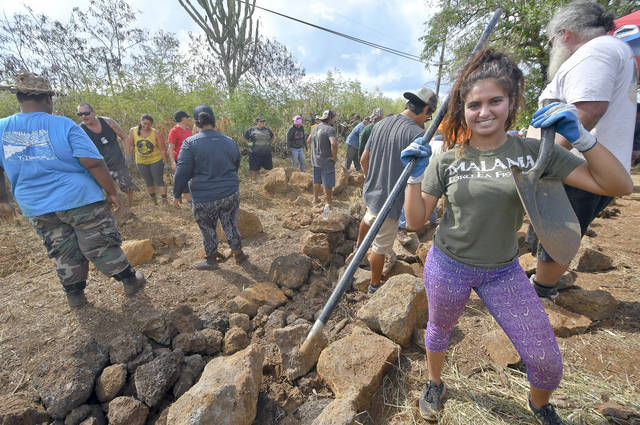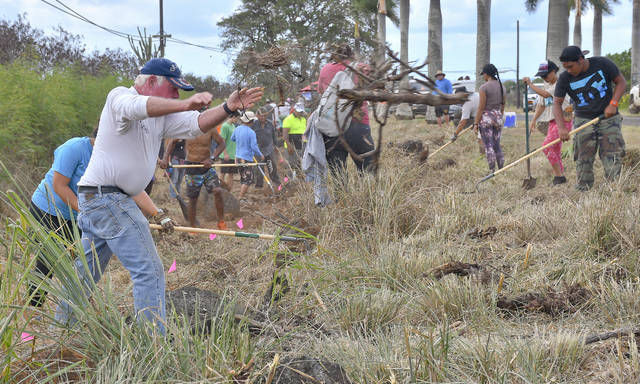POIPU — There were broken pitchforks and shovels Friday morning as the modern tools met the accumulated vegetative debris and rocks in Poipu along Kiahuna Plantation Drive. “Centipedes?” said Hal Hammatt of Oahu, president of Cultural Surveys Hawaii. “No, we
POIPU — There were broken pitchforks and shovels Friday morning as the modern tools met the accumulated vegetative debris and rocks in Poipu along Kiahuna Plantation Drive.
“Centipedes?” said Hal Hammatt of Oahu, president of Cultural Surveys Hawaii. “No, we didn’t see any centipedes yet. But we did come across scorpions.”
More than 200 people collected at the entrance to the Kiahuna Golf Club to work on restoring Hapa Road, under the direction of Teddy Blake and Malama Koloa.
The collection of people from all islands of Hawaii represent E Alu Pu. The group’s vision is to nurture community kuleana for the aina where they live to ensure the vitality of resources for use by present and future generations, Blake said.
Malama Koloa will host E Alu Pu’s general membership gathering on Kauai this weekend with two workdays scheduled at Hapa. The work will commence with the Pulama Ala Hapa “dry set wall restoration project” encompassing 1.6 miles of Hapa’s pohaku walls from Poipu to Koloa.
Blake said many businesses are supporting the effort and contributing by offering their services to kokua the project.
“This place is Hapa,” Hammatt said. “The Hapa path can be traced back to ancient times, connecting Poipu with Koloa.”
In the 19th century, Hapa became a road when St. Raphael’s Church was built.
“They needed to get the coral blocks, which form the central building core from Poipu to Koloa where the church is located,” he said. “Over the years, the road has become neglected and Teddy Blake has a vision of seeing Hapa being restored to its place of significance. He adopted it and founded Malama Koloa.”
Hammatt said the group will also have time to investigate areas of The Koloa Field System which, according to his master survey map created in the 1970s, encompasses about 600 acres, with Hapa serving as a major artery.
“Look at all these people,” Hammatt said. “This is how it used to be done.”
Blake said in 2002, Mac Poepoe of Moomomi, Molokai, shared an idea that communities around Hawaii could benefit by learning from one another how to better malama aina. This resulted in 45 people representing 13 communities gathering on Molokai in 2003, confirming Poepoe’s idea and forming E Alu Pu.
“Our hui is schooled in uhau humu pohaku and we come with many bodies to work,” he said.




